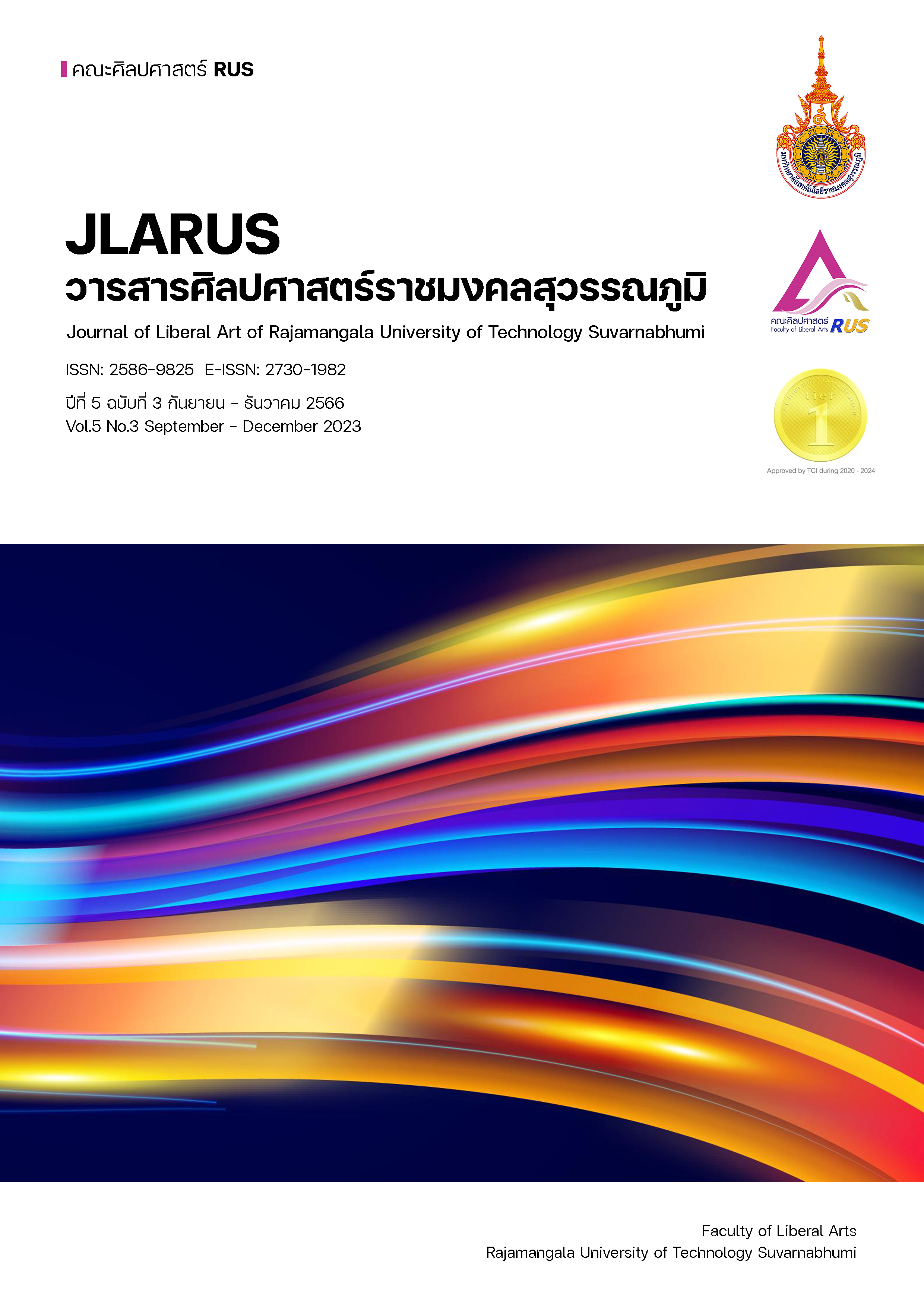DEVELOPMENT OF DIGITAL HERITAGE MEDIA ABOUT THE RESTORATION OF THE DVARAVATI U-THONG ANCIENT CITY
Main Article Content
Abstract
This study was a mixed methods research. The objectives of this research were to 1) analyze and summarize the cultural heritage data of Dvaravati U-Thong Ancient City and 2) develop digital heritage media about the restoration of the Dvaravati U-Thong Ancient City. This research consisted of two phases as follows: Phase 1 involved the analysis and summary of the cultural heritage data from the Dvaravati U-Thong Ancient City. The steps included: 1) Surveying the area and visiting the community, 2) studying historical and archeological information, and 3) analyzing and summarizing the data into a hypothetical picture. Phase 2 involved the development and assessment of the quality of the digital heritage media about the restoration of the Dvaravati U-Thong Ancient City, which consisted of five steps: 1) Planning and media analysis, 2) pre-production, 3) production of digital media, 4) post-production, and 5) presentation and evaluation. The samples of this research comprised 40 people who were community members and tourists from U-Thong City that were selected by using a purposive sampling method. The research tools used included the digital heritage media about the restoration of the Dvaravati U-Thong Ancient City, the quality assessment form for the content and technical aspects, and the gratification assessment form. Qualitative data analysis was conducted using the data comparison method. Quantitative data analysis was conducted using basic statistics, including the mean and standard deviation. The results of the research showed that 1) a summary of the assumptions of the Dvaravati U-Thong Ancient City and the format for presenting the content were obtained. 2) The content quality was good, the technical quality was very good, and the gratification of the participants was the highest.
Article Details

This work is licensed under a Creative Commons Attribution-NonCommercial-NoDerivatives 4.0 International License.
References
กองโบราณคดี กรมศิลปากร. (2554). โครงการอนุรักษ์และพัฒนาเมืองโบราณอู่ทอง จังหวัดสุพรรณบุรี. เอกสารประกอบโครงการ. กรุงเทพมหานคร: กรมศิลปากร.
ชัชฎา ชวรางกูร และสรชัย ชวรางกูร. (2565). การพัฒนาสื่อดิจิทัลมรดกทางวัฒนธรรมไทย ด้วยแบบจำลอง 3 มิติ เชิงสถาปัตยกรรม พระนารายณ์ราชนิเวศน์ ในสมัยกรุงศรีอยุธยาและกรุงรัตนโกสินทร์. วารสารศิลปศาสตร์ราชมงคลสุวรรณภูมิ, 4(2), 266-280.
ณัฐนนท์ จิรกิจนิมิต และศาสตรา เหล่าอรรคะ. (2564). การพัฒนาคลังข้อมูลดิจิทัลมรดกทางวัฒนธรรมจังหวัดลำพูนเพื่อส่งเสริมเศรษฐกิจสร้างสรรค์. วารสารมนุษยศาสตร์และสังคมศาสตร์ มหาวิทยาลัยนครพนม, 11(3), 251-266.
บุษบา หินเธาว์, อรรวรรณ ไพโรจน์วุฒิพงศ์ และอชิราภรณ์ แก้วจันทร์ฉาย. (2563) การมีส่วนร่วมของชุมชนในการพัฒนาสื่อเพจเฟซบุ๊กเพื่อการท่องเที่ยวชุมชนบ้านนาเมือง อำเภอชาติตระการ จังหวัดพิษณุโลก.วารสารวไลยอลงกรณ์ปริทัศน์(มนุษยศาสตร์และสังคมศาสตร์, 10(1), 66-82.
ศักดิ์ชัย ลายสิงห์. (2562). ศิลปะทวารวดี วัฒนธรรมทางศาสนา ยุคแรกเริ่มในดินแดนไทย. นนทบุรี: เมืองโบราณ.
สันติ เล็กสุขุม. (2564). รูปแบบสันนิษฐานสู่งานศิลปะ 59 ซากโบราณสถาน. นนทบุรี: เมืองโบราณ.
Maria Skublewska-Paszkowska, Marek Milosz, Pawel Powroznik & Edyta Lukasik. (2022). 3D technologies for intangible cultural heritage preservation. Heritage Science 10(3), 1-24.


